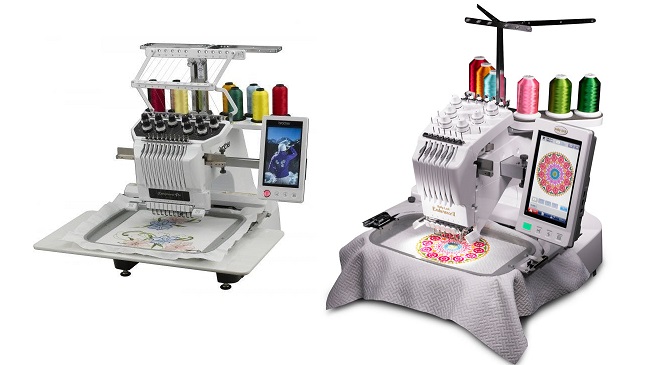
Embroidery digitizing machine have revolutionized the art of embroidery, making it easier and more efficient for hobbyists and professionals alike. However, with the plethora of options available in the market, choosing the right machine can be overwhelming. Here are ten tips to help you select the perfect embroidery digitizing machine for your needs.
1. Understand Your Needs
Before investing in an embroidery digitizing machine, it’s essential to have a clear understanding of your requirements. Ask yourself questions like: What types of projects do I want to work on? Will I be doing embroidery as a hobby or professionally? How frequently will I be using the machine? By knowing your needs upfront, you can narrow down your options and choose a machine that aligns with your specific requirements and preferences.
2. Research Different Brands and Models
Embroidery digitizing machines come in various brands and models, each offering different features and capabilities. Take the time to research and compare different options available in the market. Look for reviews from both experts and users to get insights into the reliability, performance, and overall satisfaction with each machine.
Watching video demonstrations can also give you a better idea of how the machines operate and their key features. Additionally, participating in online forums or communities dedicated to embroidery can provide valuable firsthand experiences and recommendations from fellow enthusiasts.
3. Consider Machine Compatibility
Compatibility is crucial when choosing an embroidery digitizing machine, especially if you already own embroidery software or plan to use specific design formats. Check whether the machine supports the file types and software you intend to use for creating and editing embroidery designs. This ensures smooth integration and prevents any compatibility issues that could potentially hinder your workflow.
4. Evaluate Embroidery Area and Hoop Sizes
The embroidery area and hoop sizes offered by a machine determine the maximum dimensions of the designs you can create. Consider the size of the projects you’ll be working on and choose a machine that provides ample space within its embroidery area and offers a variety of hoop sizes to accommodate different project sizes.
Whether you’re embroidering small logos or large designs on garments or home decor items, having the right embroidery area and hoop sizes is essential for achieving the desired results.
5. Check Stitch Quality and Speed
The quality of stitches produced by an embroidery digitizing machine is paramount, as it directly impacts the final appearance of your embroidered designs. Look for machines that consistently deliver high-quality stitches across various fabrics and design complexities.
Additionally, consider the stitching speed of the machine, which can influence your productivity, especially if you have large volumes of embroidery work. A balance between stitch quality and speed ensures efficient and professional-looking results.
6. Assess Ease of Use
User-friendliness is essential, particularly if you’re new to embroidery digitizing. Choose a machine that features intuitive controls and a straightforward interface, minimizing the learning curve and allowing you to focus on your creative projects rather than struggling with complex functionalities.
Features such as touchscreen interfaces, automatic thread tension adjustment, and built-in tutorials can significantly enhance the ease of use and overall user experience.
7. Explore Built-in Designs and Editing Features
Some embroidery digitizing machines come with a range of built-in designs and editing features, providing you with greater creative flexibility and convenience. Evaluate the pre-loaded designs to see if they align with your aesthetic preferences and project requirements. Additionally, consider the editing capabilities offered by the machine, such as resizing, rotating, and combining designs, allowing you to customize and personalize your embroidery projects directly on the machine without the need for external software.
8. Consider Connectivity Options
Connectivity features like USB ports, Wi-Fi capabilities, and compatibility with embroidery design software can expand the versatility and functionality of your embroidery digitizing machine. USB ports enable easy transfer of designs from your computer to the machine, while Wi-Fi connectivity facilitates wireless communication and updates.
Ensure that the machine supports the connectivity options you prefer, enabling seamless integration with your existing workflow and design resources.
9. Factor in Maintenance and Support
Like any electronic device, embroidery digitizing machines require regular maintenance to ensure optimal performance and longevity. Choose a machine from a reputable manufacturer that offers comprehensive support, including warranties, technical assistance, and access to spare parts.
Prioritize machines with reliable customer service and a robust support network, ensuring prompt assistance and resolution in case of any issues or concerns.
10. Set a Realistic Budget
Finally, determine a realistic budget based on your needs, preferences, and long-term goals. While it’s tempting to opt for the most advanced machine with all the latest features, consider whether those features are essential for your current and future embroidery projects.
Balance your budget with the machine’s capabilities and functionalities, ensuring that you invest in a machine that meets your requirements without overspending on unnecessary features.
By carefully considering these ten tips, you can make an informed decision and choose the right embroidery digitizing machine that empowers you to unleash your creativity and achieve stunning embroidery results.
Conclusion
In conclusion, choosing the right embroidery digitizing machine requires careful consideration of your specific needs, preferences, and budget constraints. By following these ten tips and conducting thorough research, you can select a machine that empowers you to unleash your creativity and achieve stunning embroidery results. Happy stitching!
FAQs (Frequently Asked Questions)
Q1: How does evaluating embroidery area and hoop sizes impact machine choice?
It ensures the machine can accommodate the sizes of designs you intend to work with.
Q2: What does assessing built-in designs and editing features offer?
It provides convenience and customization options directly on the machine.
Q3: Why are connectivity options important in embroidery digitizing machines?
They facilitate easy design transfer and updates, enhancing workflow efficiency.
Q4: What should you consider regarding maintenance and support?
Look for machines with reliable customer service and access to spare parts.
Q5: Why is setting a realistic budget essential?
It ensures you get the features you need without overspending.




